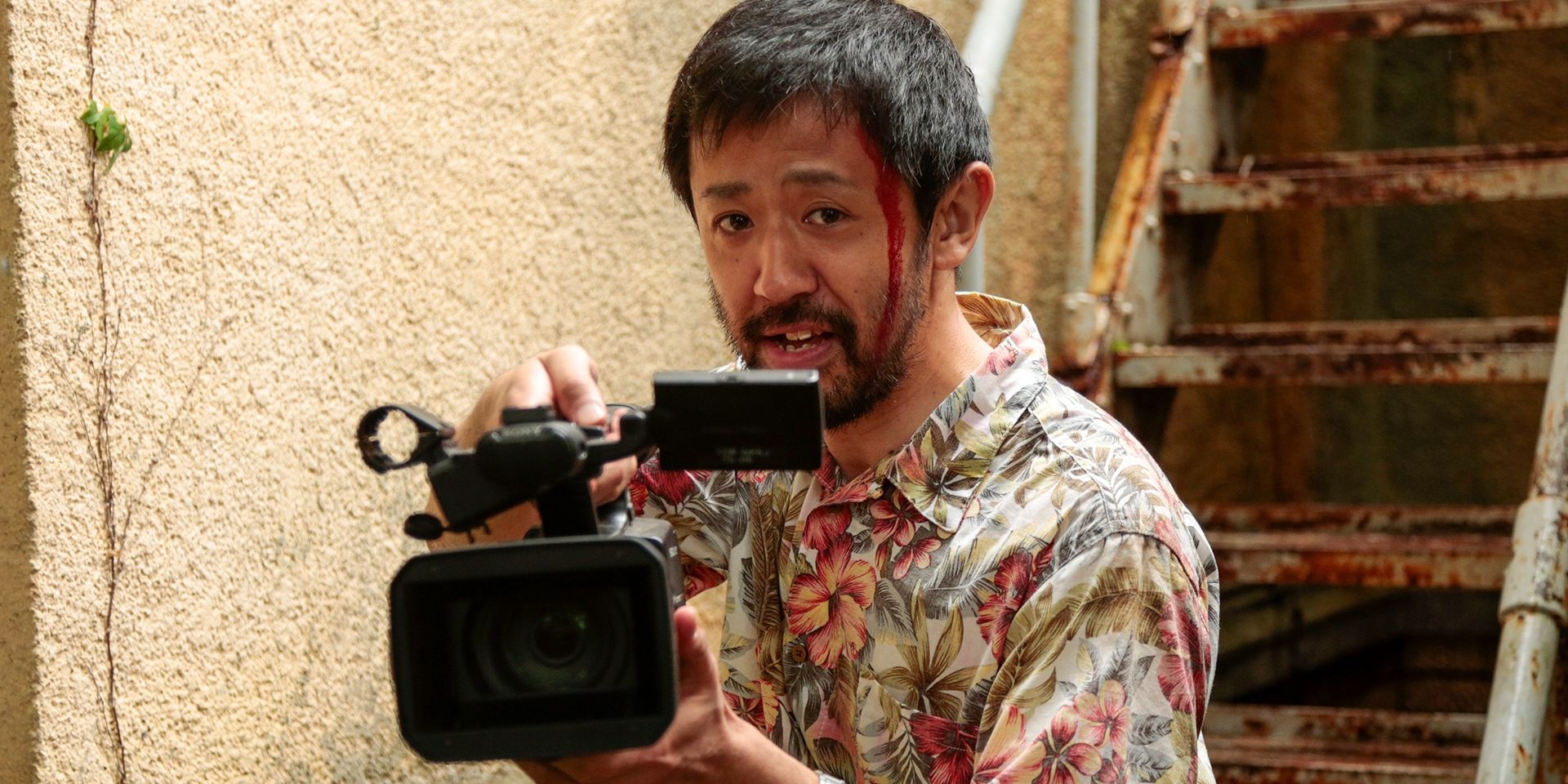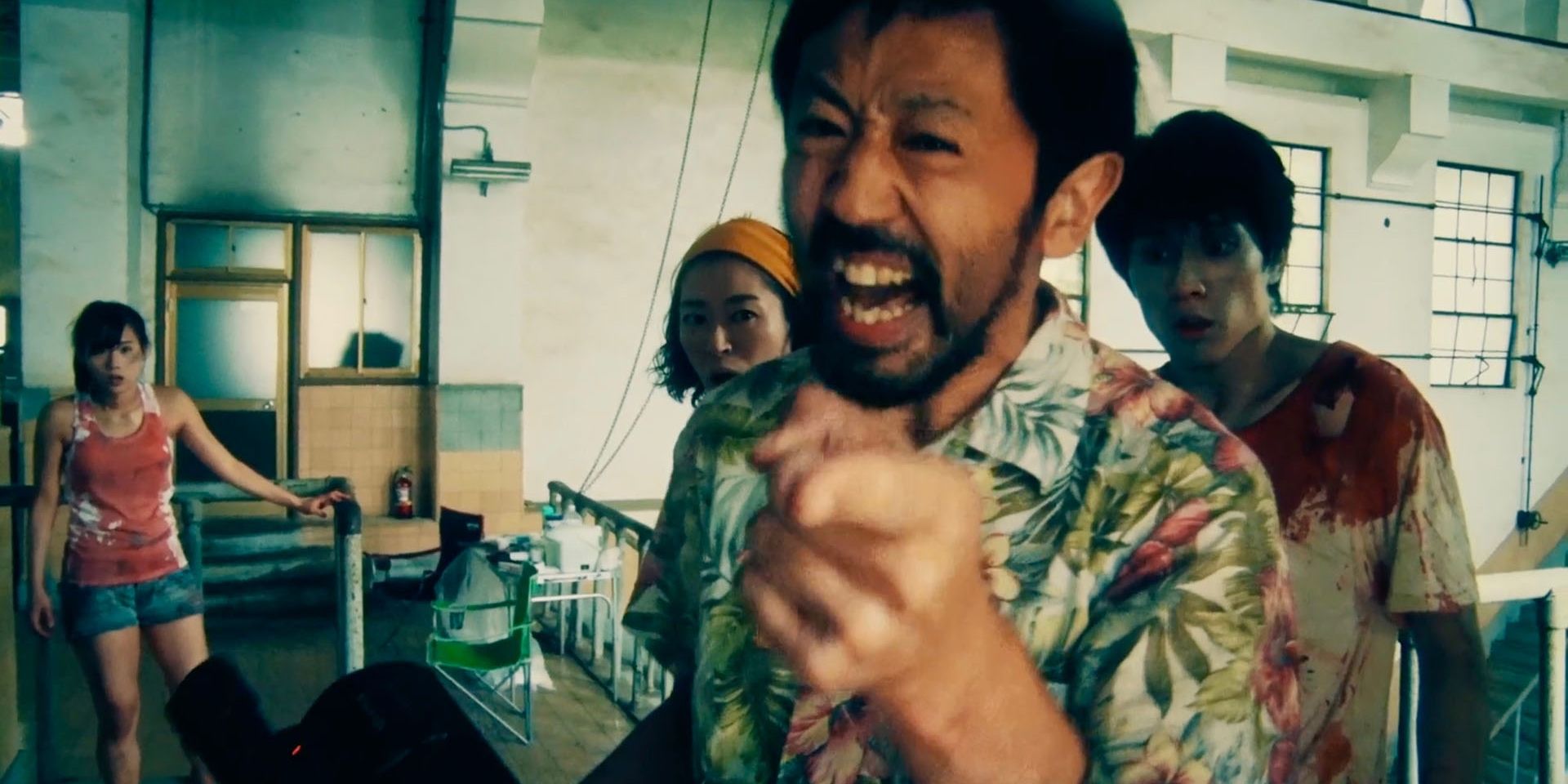This article contains spoilers for One Cut of the DeadHorror-satires that poke fun at the genre’s many tropes have become so common that their own tropes could easily be parodied at this point. Ever since Scream first called out the slasher film formula to glorious effect, it’s been getting harder and harder for horror-themed “parody films” to stand out without falling back into the same kind of uninspired writing they aim to criticize. Though there are rare exceptions, most of these parodies aren’t able to surprise their viewers anymore because by now everyone knows which tropes they're going to subvert and how they’re going to subvert them. So how did the Japanese zombie-comedy One Cut of the Dead managed to succeed at blowing its audience’s expectations out of the water?
One Cut of the Dead starts out by following an impassioned director who’s having trouble getting the lead actress of his low-budget zombie movie to act genuinely scared. His run-down filming location is an abandoned building that’s rumored to be haunted due to its past use as a secret World War II human experimentation facility. Running low on options, the director calls on the building’s purported powers and summons actual zombies to attack his cast and crew, the only way he thinks he can make his film seem truly realistic. And for the first forty or so minutes, viewers are treated to exactly the ridiculous romp most would expect based on that summary. Perhaps its single most impressive aspect is the fact that it’s filmed entirely in one take (hence the title).
But then bizarre flaws start to creep in that mess with the overall experience, like unexplained plot holes and scenes that last way too long. Some of these issues can be attributed to “satire”, but others don’t have a clear explanation, or are easier to explain away as pure incompetence on the filmmakers’ part. Pretty soon after that, viewers will start to notice that the film isn’t going to be able to fill its ninety-minute runtime, as almost every character has been killed off already. And then something strange happens: the credits start rolling. There’s a crane shot of the “final girl” (the lead actress from the beginning) looking up from the roof of the abandoned building, as viewers see that she’s standing in the center of the blood pentagram that the director used to summon the zombies, and then the film appears to end.
This is, of course, a fake-out, but even viewers who know that the film is meant to be a comedy might not immediately figure out what’s going on. It turns out that everything that’s happened so far was actually a live TV performance (also titled “One Cut of the Dead”), hence the single take. Viewers then watch the film turn into a mockumentary about the pre-production of what they just saw, as the cast and crew of the fictional “One Cut of the Dead” struggle to prepare for the daunting challenge of broadcasting a movie live as it’s being made. And then the day arrives, and the opening long-take repeats itself from the perspective of those putting it together. It creates a series of brilliant, laugh-out-loud payoffs that reveal how all of the problems viewers might have found were actually caused by behind-the-scenes complications. It’s a triumphant ode to the filmmaking process, culminating in a moment that shows how each of the crew members work together to make something truly worth celebrating.
And that’s why the biggest twist in One Cut of the Dead isn’t its nesting-doll plot, but that it’s actually a heartfelt and even inspiring comedy that also happens to homage classic zombie movies. What the film lacks in production value (it cost just $25,000 to make), it more than makes up for in terms of creativity. That long-take seems a lot more impressive when it’s revealed that it was filmed at the same time as the meta conclusion that wraps the whole thing together. It apparently took the real-life film crew six tries to get that scene right, rather than just one, but it comes off flawlessly as a result of their dedication.
Unsurprisingly, Japanese audiences were enthralled by One Cut of the Dead, and it ended up making back more than 1,000 times its budget at the box office. This success resulted in a made-for-TV spin-off set in Hollywood, which has a similar structure to the original but follows the director character’s daughter as she tackles her own production. A foreign remake is also in the works, titled Final Cut and helmed by Michel Hazanavicius, the Oscar-winning director of The Artist.
During the COVID-19 pandemic, the real-life director of One Cut of the Dead, Shin'ichirô Ueda, released a short film sequel to YouTube titled One Cut of the Dead – Mission: Remote. It features the cast of the original film reprising their roles as the fictional cast and crew, making a true-crime short over a video call. It’s a fun and endearing watch that proves that even during tough times, entertainment can continue to provide an escape from the troubles of the world. Ueda states in the YouTube description that he wants the film to convey the message that “we can make anything with creativity”, a statement he's already proved to be true.


